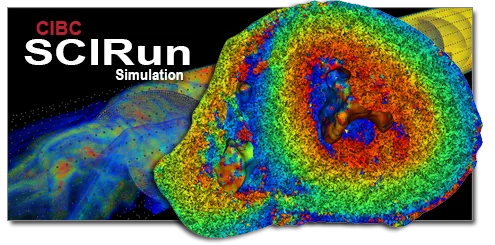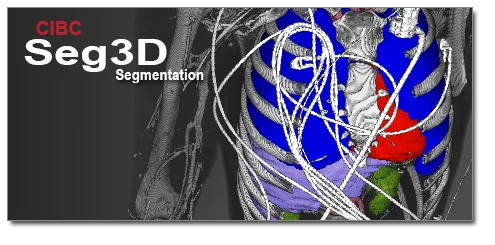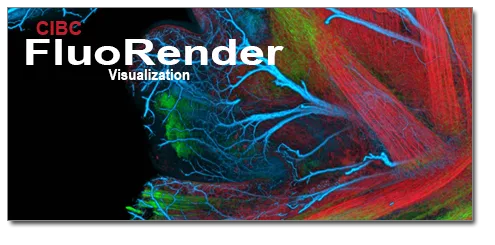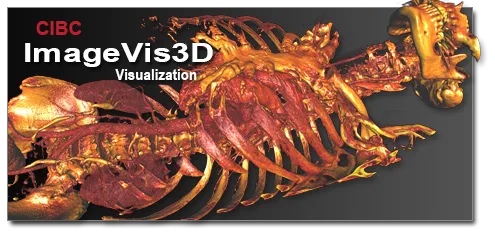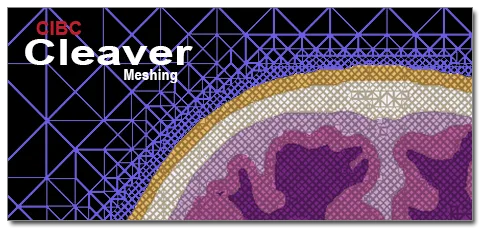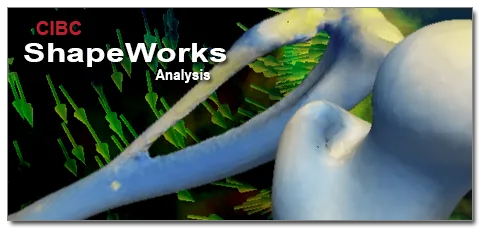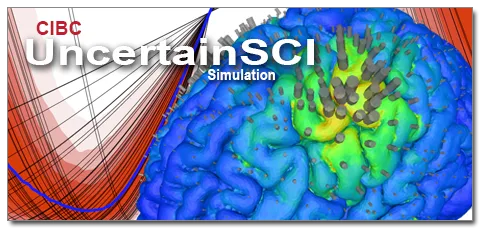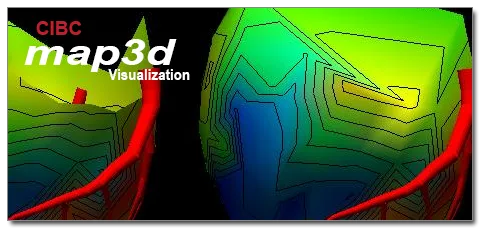The Center for Integrative Biomedical Computing (CIBC) is dedicated to producing open-source software tools for biomedical image-based modeling, biomedical simulation and estimation, and the visualization of biomedical data. The Center works closely with software users and collaborators in a range of scientific domains to produce user-optimized tools and provides advice, technical support, workshops, and education to enhance user success. Biological projects and collaborations drive our development efforts, all with a single unifying vision: to develop the role of image-based modeling and analysis in biomedical science and clinical practice.
The CIBC originally began as the NIH Center for Bioelectric Field Modeling, Simulation, and Visualization on September 15, 1999. During the first five years, the Center focused on creating an extensible, scalable, scientific problem-solving environment (PSE) and on developing corresponding research to solve real-world problems relating to bioelectric fields. To accomplish this goal, we conducted research and development in advanced modeling, simulation, and visualization methods for solving bioelectric field problems; we also created BioPSE, an extension to the existing SCIRun, which is a modular, extensible, integrated soft-ware problem-solving environment for bioelectric field problems. The SCIRun software supported interaction among the modeling, computation, and visualization phases of bioelectric field simulation with BioPSE providing specific extensions for the Center.


In 2005, following the NCRR renewal, the Center was renamed the Center for Integrative Biomedical Computing (CIBC). At this time, the Center reengineered SCIRun to separate the underlying filters or modules from the dataflow interface. The Center also began integrating third-party packages into its tools, such as the Insight Toolkit (ITK), in turn assisting in the latest generation of Center applications, such as map3d, ImageVis3D, Seg3D, BioMesh3D, and ShapeWorks.
Another example of a highly successful application from the Center is Seg3D, which performs user-guided image processing and segmentation. Seg3D is also based on the Insight Toolkit and presents through a simple user interface the appropriate filters and segmentation algorithms with some settings pre-selected based on our experience with data sets from our collaborators. By providing interactive access to the relevant parameters with experience-based guidelines and constraints imposed, Seg3D seeks to make available to biomedical users a powerful set of capabilities in a form that is inviting and easy yet efficient to use.



Now, the Center’s tools assist researchers’ investigations in such areas as cardiac electro-mechanical simulation, ECG and EEG forward and inverse calculations, modeling of deep brain stimulation, EMG calculation, determination of the electrical conductivity of anisotropic heart tissue, orthopedics, and a number of other areas. The Center has made significant advances in the area of bioelectric field simulation, modeling, and visualization. We created new approaches to the solution of forward and inverse problems in both cardiology and neurology, using SCIRun to both carry out the research and as a repository for its products. We developed several new methods for the visualization of three-dimensional data sets and translated award-wining, cutting-edge visualization research into working capabilities in SCIRun, map3D, Seg3D, and ImageVis3D. Because we believe that the ability of researchers to compare their new ideas, techniques, and data with those of other researchers is crucial to scientific process, we have gathered high-quality data sets and made them freely available to the scientific community. We have also released a set of images and associated geometric models, from which we have computed simulations and prepared visualizations. The Center has made every aspect of our research available to other researchers for validation and comparison of their own methods. We believe providing such resources will accelerate progress in biomedical computing and biomedical science in general.
With the sun setting of the NIH/P41-funded Center for Integrative Biomedical Computing (CIBC), there is an urgent need to maintain the twenty-year legacy of biomedical software that continues to have major impact in diverse biomedical research communities. The CIBC was a Biomedical Technology Research Resource (BTRR) with a focus on research and development in the area of image-based modeling, simulation, and visualization. The resulting impact of scientific publications, novel algorithms/computational approaches, and software tools and data sets is widely used with more than 800 citations since 2017 and over 30,000 software downloads.

